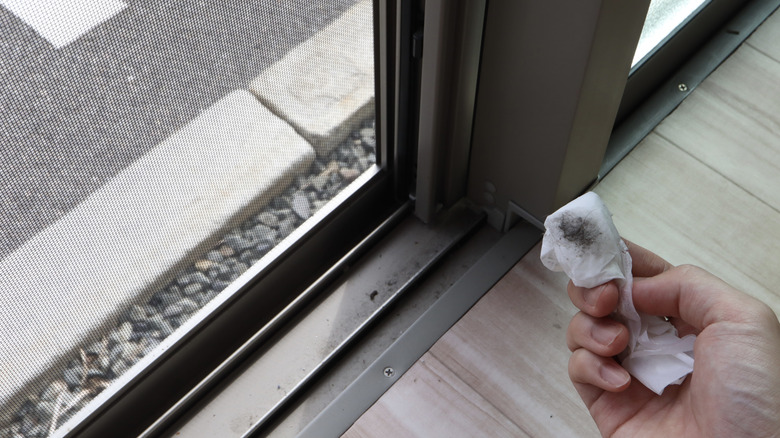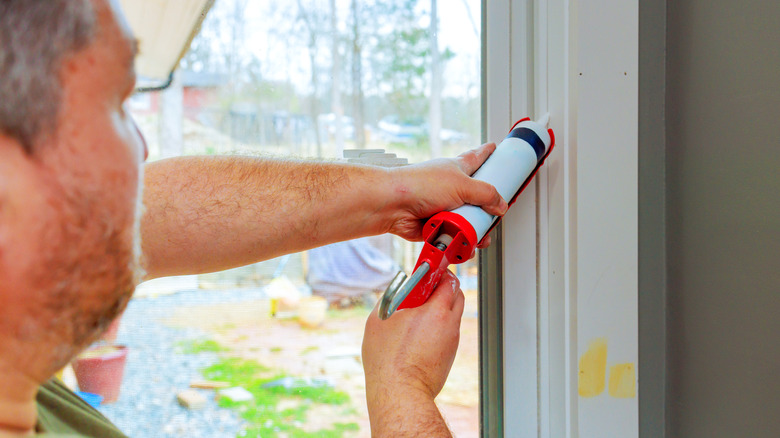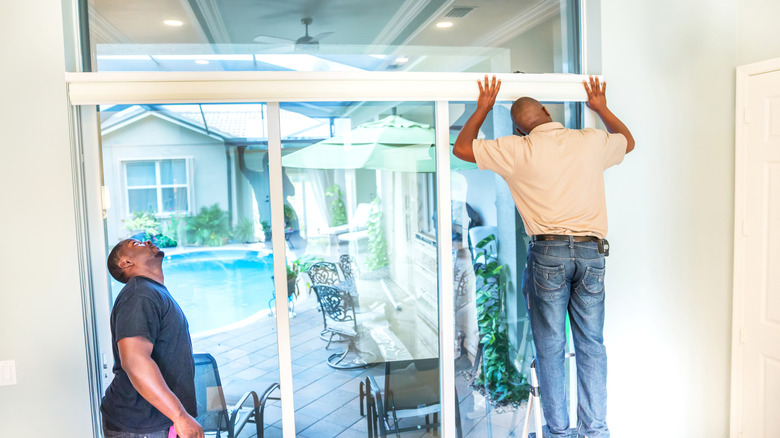Sliding Glass Door Maintenance Checklist Before Winter Hits
With winter on the horizon, it's essential that you investigate the integrity of your home's envelope not only for your comfort during the colder weather, but also to ensure that your home is energy efficient, saving you from spending an arm and a leg on heating costs. While initially you may think to focus on spots like the windows or the furnace, there's a major potential source of issues when the cold weather sets in: your sliding glass doors. But if you take a proactive approach to checking and prepping those doors for winter, it can save you trouble and even some money in the months ahead.
Some sliding glass doors checks and chores to do before winter are incredibly simple. Performing tasks like cleaning tracks so that they are debris-free is a straightforward way to make sure your doors are easy to close, preventing any damage to the doors' rollers. Other to-dos, like ensuring your weatherstripping is in good shape, may turn into a bigger chore if you have to replace it. However, you'll be thanking your past self for addressing the issue head-on, especially when you get your first cold snap of the season. A little maintenance today will ensure your sliding door functions smoothly and your home stays warm and efficient throughout the winter.
Clean tracks
One of the easiest tasks to ensure your sliding glass door is in great shape for the winter is cleaning your door tracks, which can help prevent operational or energy issues during the colder months. Throughout the year, grime and debris accumulate, causing the door to stick, or, even worse, come off its tracks. This compromises the seal, leading to bad drafts and, subsequently, higher heating bills. Avoid this by vacuuming the tracks using a tool for narrow spaces. Then, scrub the remaining grime with warm water and some mild detergent, targeting stubborn buildup with an old toothbrush.
Lubricate the track
As a follow-up to cleaning your tracks, lubricate them to ensure a smooth (literally) operation when the temperatures drop. Doors that are easy to open and close are subjected to less force, thus preventing any damage or stress on the frame that could lead to holes in the seal. Spray your tracks with some WD-40 to make your doors glide. As an added bonus, WD-40 will also help keep the tracks from freezing during the winter, preventing yet another snafu that could break your airtight seal around the door.
Wipe down glass
While this task may sound obvious, cleaning the glass on your sliding glass doors will allow for maximal natural sunlight to enter your home during cold fronts. In the winter, every bit of available sunlight is valuable, as it helps warm your interior spaces and reduces your reliance on heaters. Additionally, clean glass makes it easier to spot any failing spots that could let in cold air. Throughout the year, dirt, pollen, and water buildup will dull your glass, so tackle it head-on to improve your winter moods and sights.
Reshape the track
Getting into the bigger fixes, check to make sure your sliding door track and frame aren't bent out of shape before winter. When the metal track is out of shape, it stops the door's rollers from gliding, and the stress wears them down. More importantly, bent-out-of-shape tracks and frames prevent the door from properly sealing when closed. During cold weather, a bad seal lets warm, humid interior air escape and condense, forming ice in the gap. Carefully reshape a minor bend with pliers or an adjustable wrench to ensure the rollers can move correctly.
Inspect weatherstripping
Weatherstripping, material used to seal air leaks around doors and windows, is a simple method for insulating your doors, but it does degrade over time due to environmental factors. Therefore, before the winter temperatures set in, you should check to see if your weatherstripping has any vulnerabilities or is worn down from wear. If so, replace the material — whether silicone, foam, or rubber — to make sure your seal is tight and prevents drafts or condensation issues. You won't have to resort to pool noodle hacks to winterize your sliding glass doors if you're proactive about weatherstripping.
Re-caulk gaps
Speaking of gaps and drafts, over time, the caulk between the door frame and the wall siding can also degrade, creating small spaces where air can pass through. If these gaps are left unsealed, it will definitely make your home drafty and force you to run your heater more frequently. A bigger issue is that bad caulk allows precipitation to penetrate the wall areas around the door, leading to hidden moisture issues like wood rot in the frame. A fresh, flexible caulk bead seals the perimeter, protecting your home's structure and energy efficiency for the winter.
Apply window film
A budget-friendly way to winterize your sliding glass doors, window film is effective at keeping heat inside since it acts as a second layer of insulation and protection to keep heat trapped rather than escaping into the cold. Window film minimizes drafts, helping keep your indoor spaces a steady, consistent temperature, thus reducing stress on your heaters (and also your wallet). It can have year-round benefits, too — some window films provide UV protection and glare reduction while also keeping cool air inside during the summer months.
Replace failing doors
If your sliding glass door doesn't respond to any of the above checks and consistently fails to seal, replacing it before winter might be the critical, long-term investment needed to keep the cold out. An old door can be an enormous source of heat loss, and trying to seal a failing door with new weatherstripping or caulking will continue to be ineffective. Installing a new, energy-efficient door — typically one with low-emissivity (Low-E) glass — is the best solution to prevent heat from escaping, both lowering energy bills and keeping you cozy throughout the winter!








